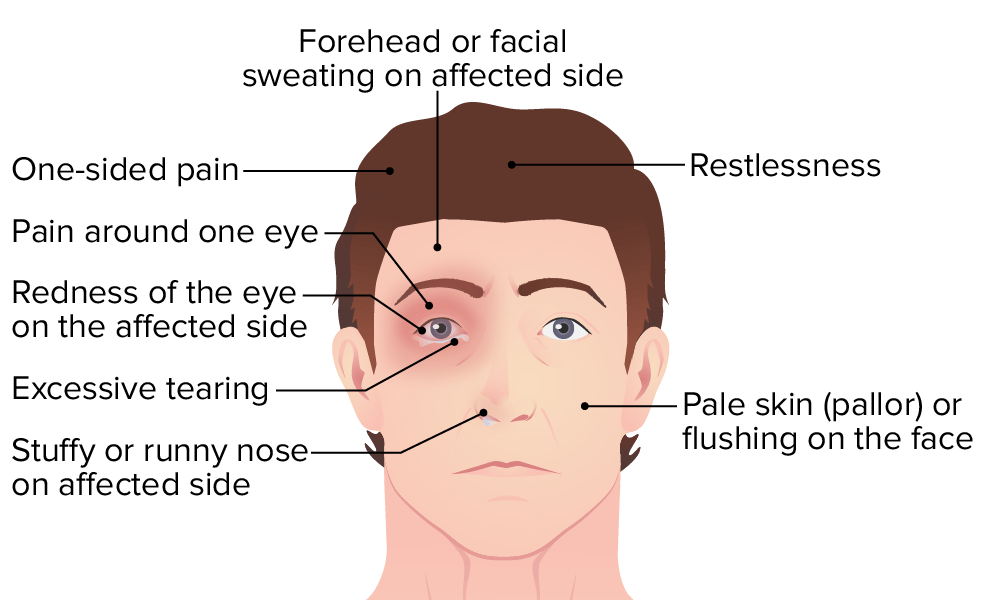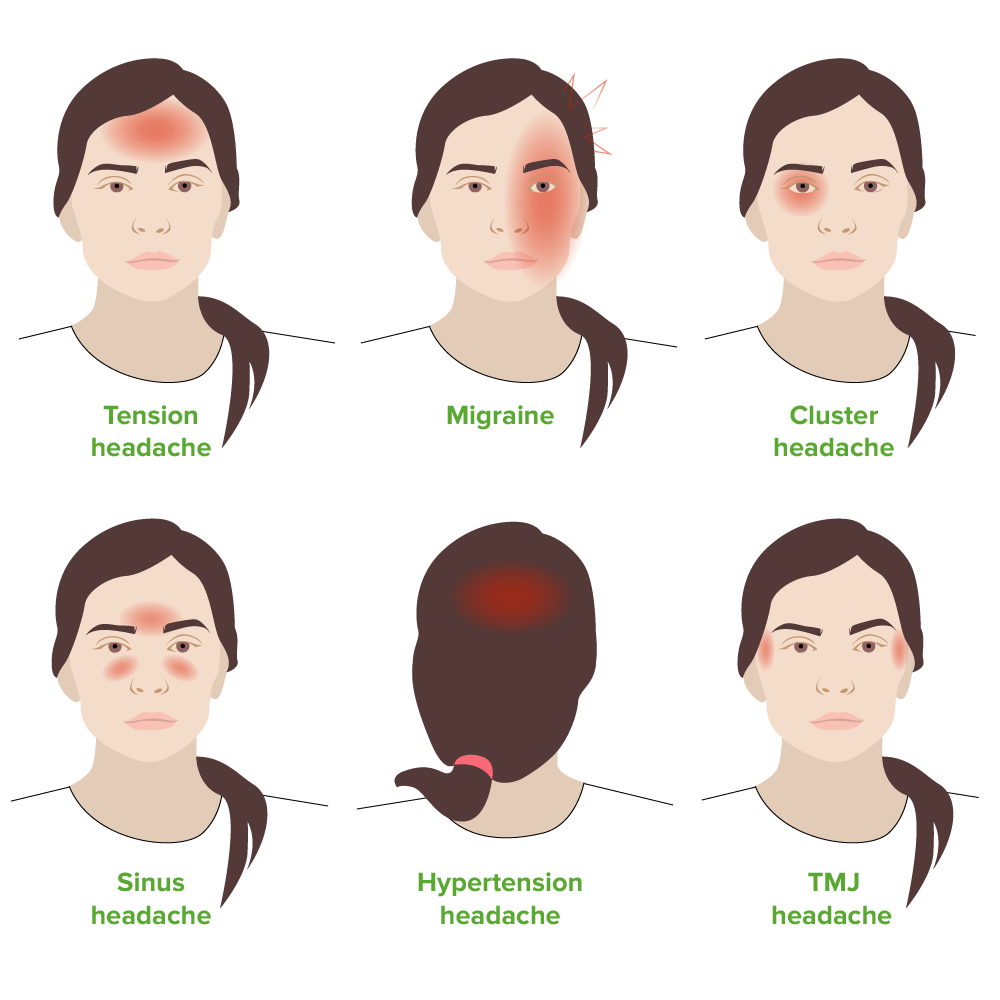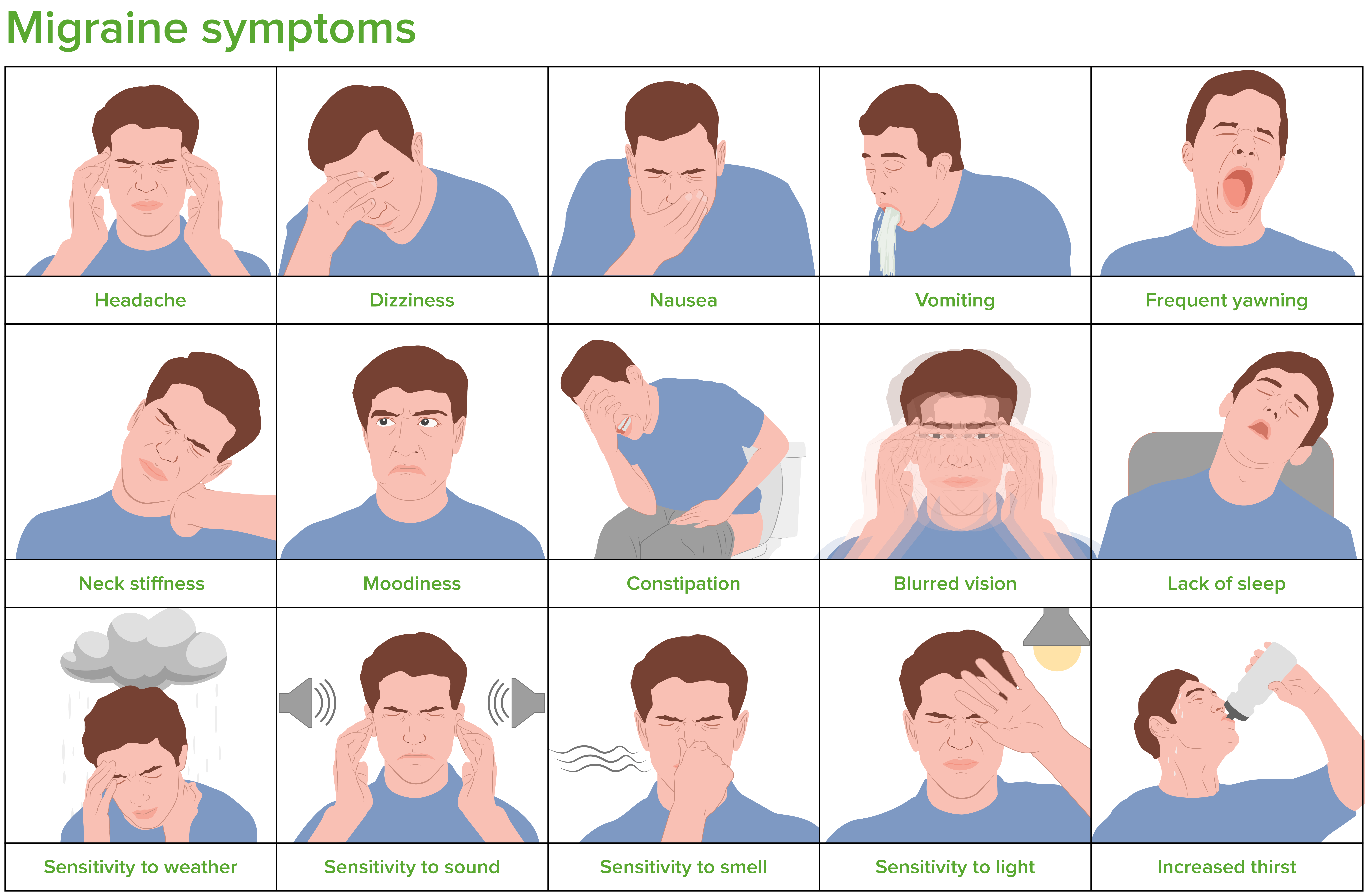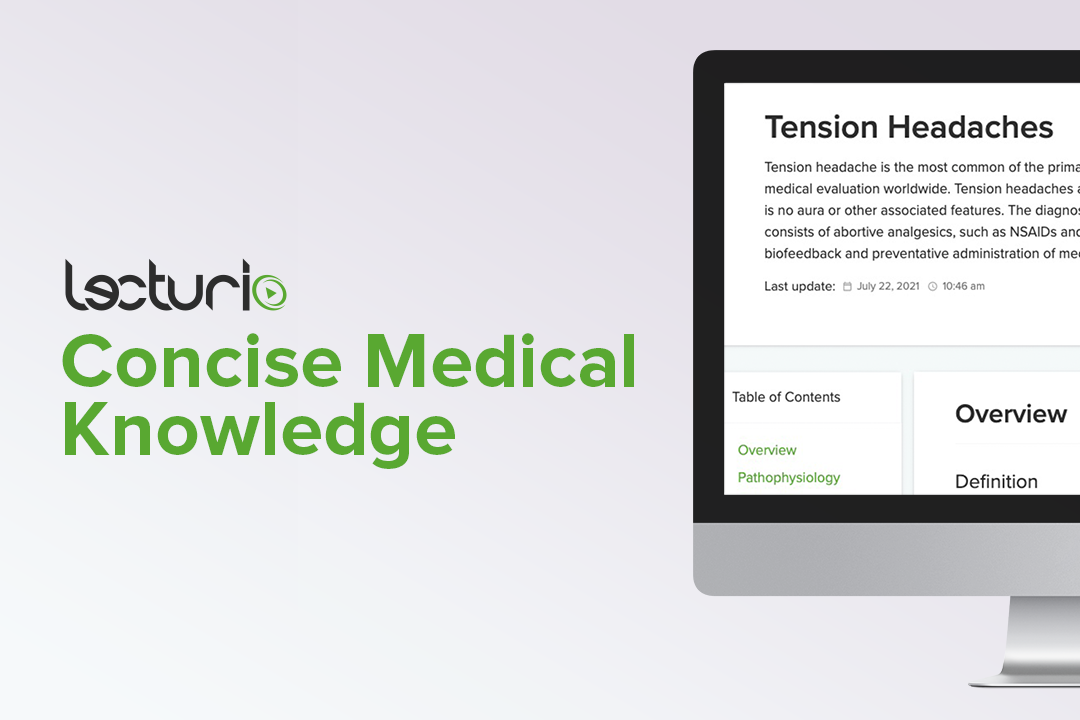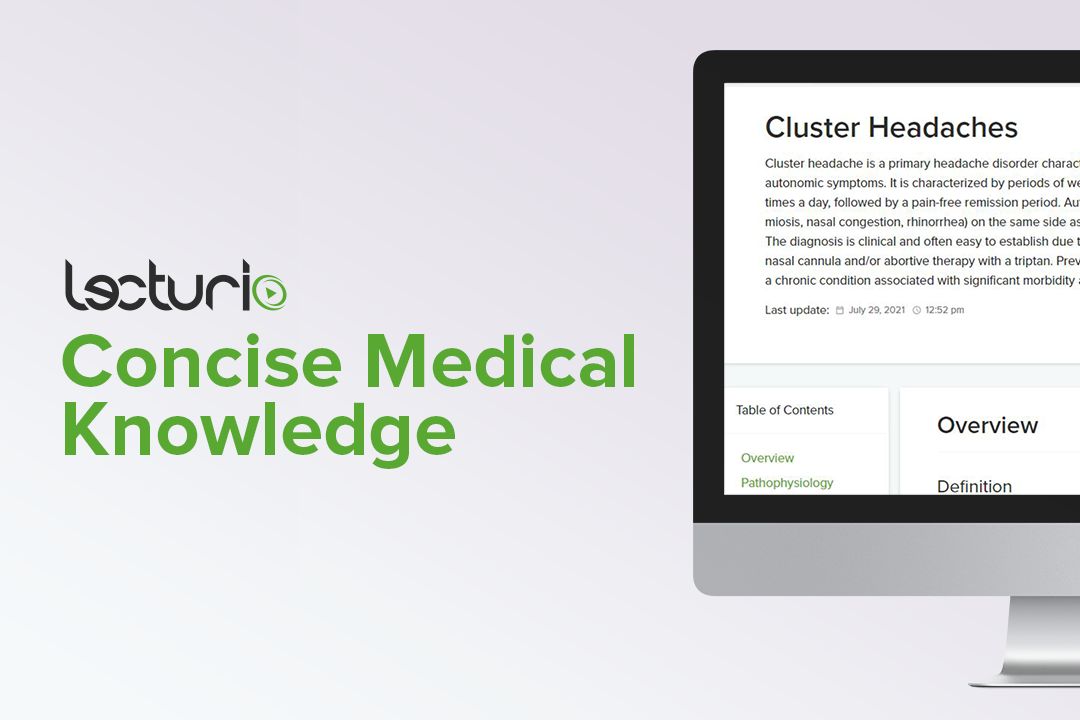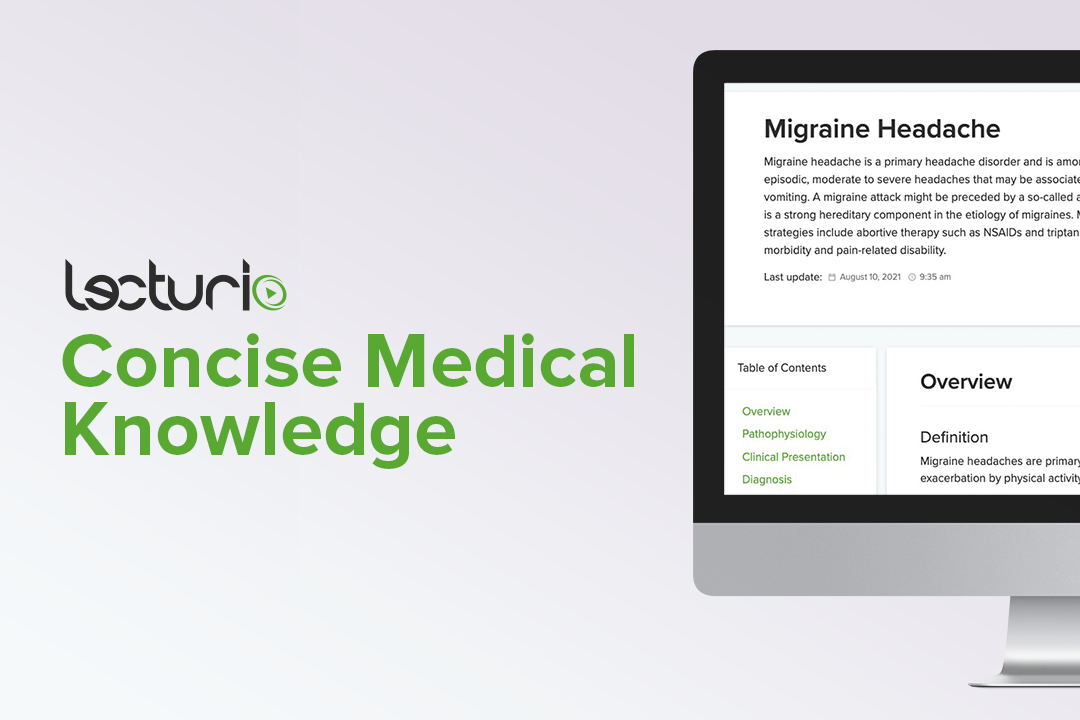Playlist
Show Playlist
Hide Playlist
Migraines and Headaches in Children
-
Slides MigrainesandHeadaches Pediatrics.pdf
-
Download Lecture Overview
00:01
In this lecture, we will review Migraines
and Headaches in Children.
00:06
Migraines are a common complaint in children.
00:09
They are more frequent as children get older.
And there is many causes of headaches.
00:14
So, a good history goes a long way
in figuring out what kind of headache
or migraine is going on.
00:20
There are many vascular causes of headaches
including Migraine,
Common headache, Vasculitis
or Aneurysm.
00:29
And as you can see, Aneurysm while
rare is extremely severe.
00:33
So, distinguishing between these types
of headaches is important.
00:39
Generally, 50% of headaches will
start with people under 20 years of age.
00:46
Triggers of migraines can include certain
types of food, certain chemicals,
alcohol, especially maybe red wine
or certain types of alcohol.
00:55
Certain medications can trigger
migraines in people.
01:00
And lights and noise can trigger
migraines.
01:04
Additionally, psychosocial stress
can trigger migraines.
01:07
So people with migraines will tell you
there are certain things
that tend to set them off.
01:12
And so, avoidance of those things
becomes a major part of their lives.
01:18
Migraines rarely present in infants.
01:21
They can present with episodes of Pallor
episodes of decreased activity,
and episodes of vomiting.
01:28
Often those infants are not capable
of saying that their head hurts.
01:32
This can be a very difficult diagnosis.
01:35
In young children, they may develop
vomiting in addition to their headache
they might have light or noise
sensitivity.
01:42
And
often migraines are bitemporal.
01:45
So, if there are saying there is a focal
headache in one spot,
that's probably not a migraine.
01:52
On adolescents migraines tend to be
gradual in onset.
01:56
And tend to be a throbbing headache
and they are often unitemporal.
02:00
So, in adolescents, they become
more unilateral.
02:05
Migraine typically worsens with activity.
02:09
It is important for a migraine patient
just to lay still.
02:12
Often they have photophobia or
phonophobia
so a quiet dark place
is an important way to help
to get them feeling better.
02:22
Typically migraines can last to 1 but rarely
even up to three days.
02:27
So, a one-hour headache, usually
tolerable
but getting them under control is important.
02:34
Some patients with migraines will
say that they sense an aura
or see flashing lights or
other things.
02:42
This is less common on young
children.
02:44
Only about a third do that.
02:47
Generally, auras include visual spots.
Seeing colored lights,
or even complex images.
02:55
Occasionally, patients can have complicated
migraines and this can result in temporary
neurological benefits such as weakness
or limpness.
03:06
Those are rare but they are definitely
known to happen.
03:09
Migraines are controlled best
by having a good regimen of sleep,
exercise and hydration.
03:17
Of course, if a patient has a particular
trigger,
that causes them to have migraines,
patients should avoid those.
03:24
And over time they developed an
understanding of what are the typical
triggers of their migraines.
03:31
Therapy is important for migraines.
Because these headaches
can be debilitating.
03:36
Generally, we provide Ibuprofen
very early in the headache.
03:40
Earlier, using Ibuprofen is important
as it can stem and reduce the severity
of the eventual worseness
of the headache.
03:50
Patients can use Sumatriptan
nasal spray
after 12 years of age in children.
03:55
So, that is a good and effective
method and medication
for control of migraines.
04:01
Other meds include promethazine
prochloperazine
and there are others out there.
04:08
So, there are also other types
of headaches we should discuss.
04:12
One common type of headache
is the tension type of headache.
04:16
Tension headaches are usually diffused
in location and non-throbbing.
04:21
They are usually not worse with
activity and there is no nausea
or vomiting associated with it.
04:27
They can last up to
30 minutes.
04:29
But they can even last up to 7 days.
So this could be a very prolonged headache.
04:35
The mechanism of tension headaches
isn't quite clear.
04:39
But we usually treat them
with Ibuprofen
or if they are refractory or not getting
better, sometimes people use topiramate.
04:48
Cluster headaches are rare in children
under 10.
04:52
They are usually unilateral.
04:54
or frontal or periorbital.
04:58
They have often a trigeminal
distribution in the trigeminal nerve.
05:03
And they are usually short but there
is multiple headaches over and over again
in a short period of time.
05:10
Hence the name, cluster headaches.
05:14
The first-line therapy for cluster
headaches
interestingly is oxygen therapy.
05:19
We'll put these children on
100 percent oxgyen
and then often get better.
05:24
We often will send families home
with oxygen tanks
to use that to treat their headaches.
05:29
Also, triptans may be useful
in the treatment of their headaches.
05:33
Other medicines include,
Ergotamine
and octreotide.
About the Lecture
The lecture Migraines and Headaches in Children by Brian Alverson, MD is from the course Pediatric Neurology. It contains the following chapters:
- Introdauction to Headaches
- Clinical Presentation of Migraines
- Management of Migraines
- Management of other Types of Headaches
Included Quiz Questions
Which of the following methods can be used to prevent and control migraines?
- A good sleep regimen, exercise and adequate hydration
- Yoga and use of fresh juices
- 12 hours of daily sleep
- Increasing carbohydrates in the diet
- Prophylactic exposure to loud noises and lights.
A 12-year-old boy is having a severe frontal and peri-orbital headache only on the left hemicranium. What type of headache is this?
- Cluster headache
- Tension Headache
- Migraine
- Stressed headache
- Hypertension headache
A 15-year-old girl presents with a headache she can't quite locate. She mentions it's been going on for the last 2 days, is not worsened when she exercises, and isn't nauseous or has vomited. Which of the following is the most likely type of headache?
- Tension-type headache
- Cluster headache
- Migraine
- Vasculitis-induced headache
- Aneurysm-induced headache
Which of the following is FALSE regarding migraines?
- Migraines are only unilateral in young children.
- 50% of the patients are under 20 years of age
- A psychosocial stressor can trigger migraine
- Migraines in infants can present with pallor
- Migraines worsen with activity
Which of the following is a feature of complicated migraines?
- May result in temporary neurological deficits
- May be associated with severe vomiting
- May last up to 3 days
- Bitemporal
- May be triggered by psychosocial stress
Which is NOT useful in the management of migraines?
- Phenytoin
- Hydration and sleep
- Promethazine
- Sumatriptan
- Ibuprofen
Which of the following is NOT a feature of tension-type headaches?
- Trigeminal distribution
- Diffuse location
- Unclear mechanism
- Lasts 30 min to 7 days
- Non-throbbing
Which type of headache follows a trigeminal distribution?
- Cluster headache
- Tension-type headache
- Migraine
- Aneurysm-induced headache
- Vasculitis-induced headache
Customer reviews
5,0 of 5 stars
| 5 Stars |
|
1 |
| 4 Stars |
|
0 |
| 3 Stars |
|
0 |
| 2 Stars |
|
0 |
| 1 Star |
|
0 |
I particularly liked the table with the difference in headaches with age. Very useful!

